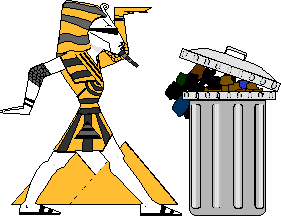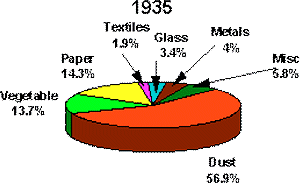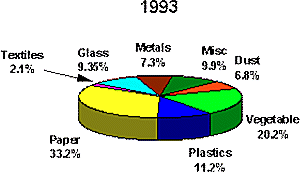| A History of Waste | |
| |

|
In early pre-industrial times waste would have been mainly the ash from fires, wood, bones and vegetable waste. Later in the Middle Ages fragments of pottery, tools and cloth. A Neanderthal pet would have had little to chew on, but in the 21st century even the pet produces waste. |
|
Archaeologists have obtained valuable information about ancient civilisations by investigating the kinds of waste produced. As cultures change so to does the type and quantity of waste. If archaeologists excavated the modern landfill site they would see that the waste we produce now is of a much "higher" quality and quantity has increased vastly - they might be tempted to call it "the throw away age". |

|
|
Here is a comparison of the types of waste found in dustbins between 1935 and 1993. On average every person in he UK throws away his or her own body weight in rubbish every three months. Every home in the UK:
|

|
| Task 2: | Discuss the differences between the contents of the dustbins, 1935 and 1993, i.e. what changes are there and what might the reasons for this be? How do you think industrial wastes may have changed during the same period? (750 words) |